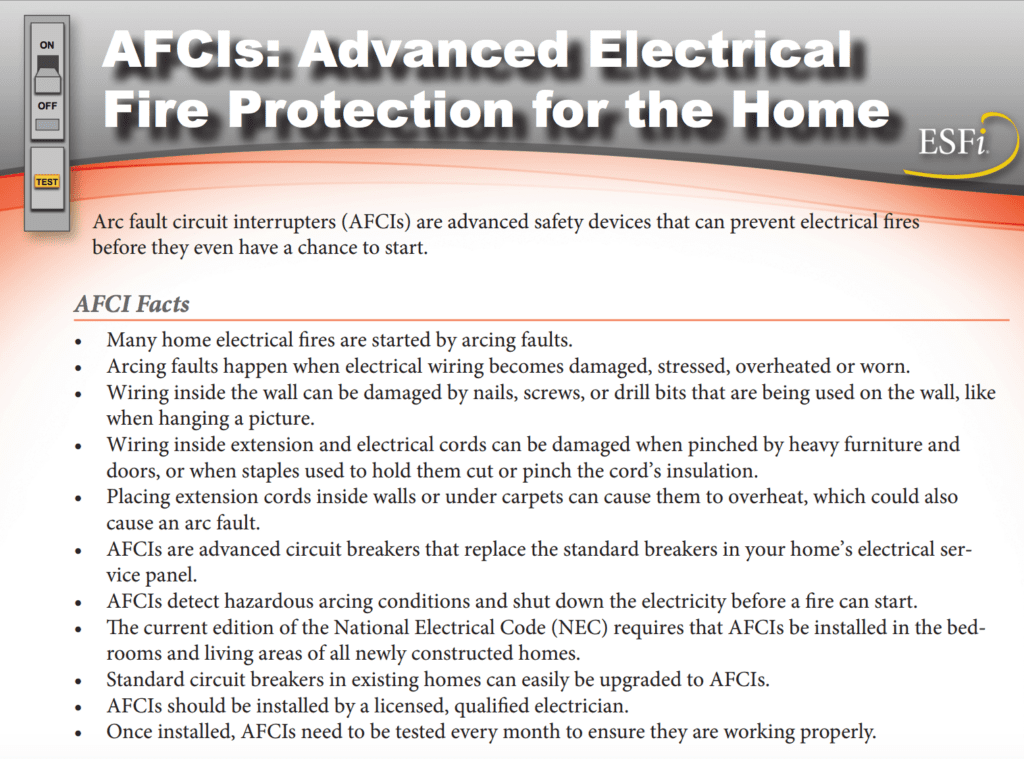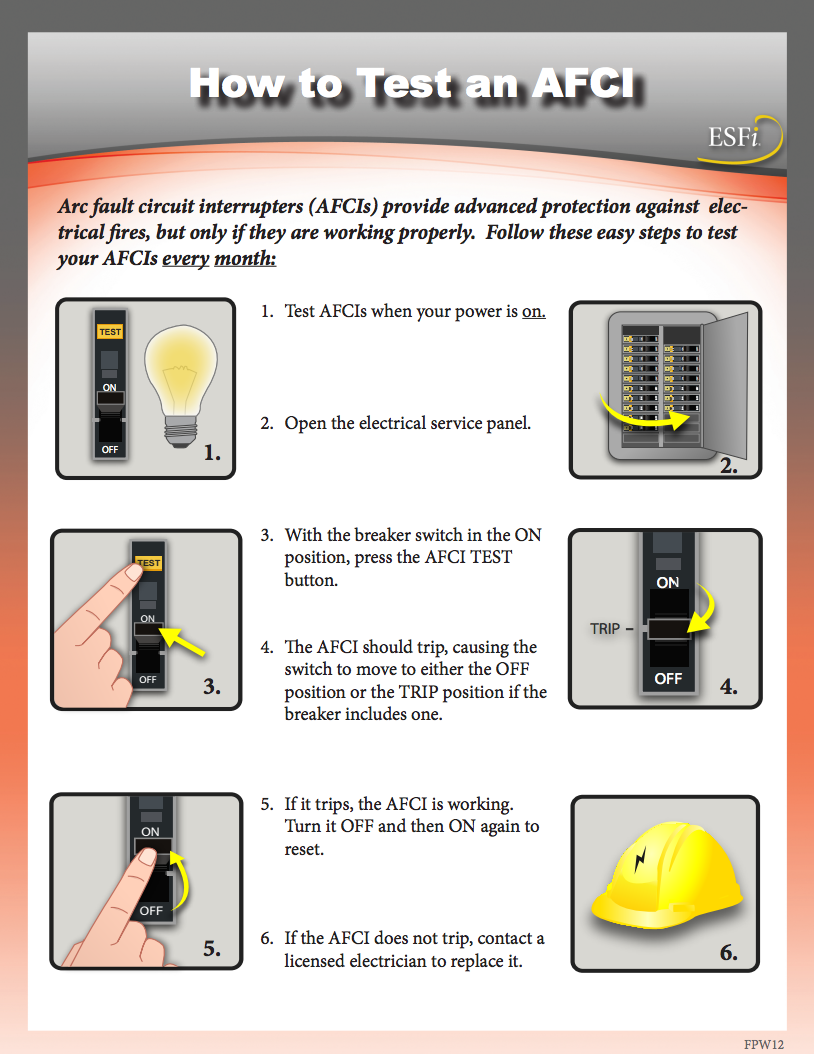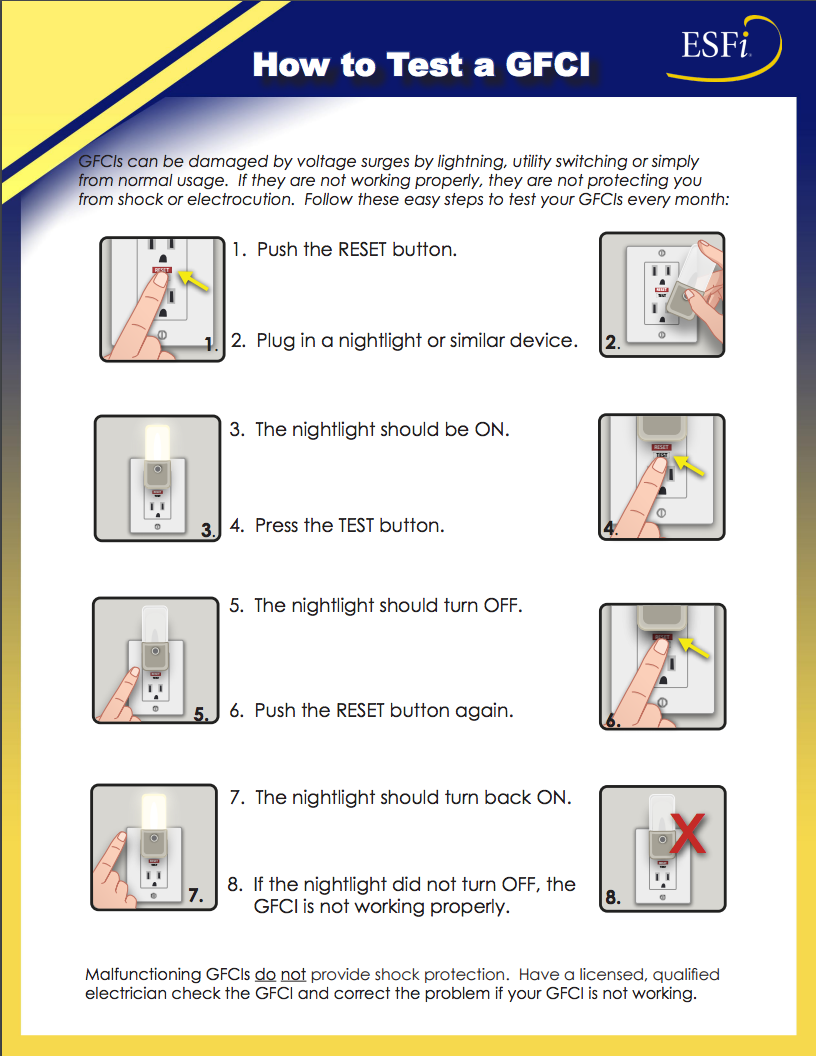GFCI vs. AFCI: Protection Against Electrical Fires
Enjoy reading the latest DIY articles and saving money?
Receive our latest helpful hints, tricks and savings, directly to your inbox.
Posted March 28, 2018
Technology has made it easier for homeowners to protect their home from electrical overloads and short circuits. While circuit breakers offer a basic level of electrical fire protection, there are two more recent products on the market that offer enhanced protection from arcing and ground-faults: GFCI vs. AFCI. Called electrical circuit interrupters, these two similarly named devices will interrupt your circuit, like your breakers do, but for different reasons.
A standard breaker trips when electrical current exceeds the breaker’s amperage rating.
An AFCI outlet or breaker trips when it detects electrical arcing faults.
A GFCI outlet or breaker protects against electric shock.
Here’s a breakdown of the different types of breakers (or fuses) you may find in your electrical panel:
Source: esfi.org
Arc Fault Circuit Interrupters (AFCI)
An arc fault can be caused by a variety of common electrical problems:
- damaged or overheated wiring; melted insulation
- stressed, loose, or improper electrical devices and connections
- pierced insulation due to nails, screws, staples, or other fasteners
- frayed, cracked, or deteriorated wiring/insulation due to heat, age, stress, and chemical erosion
- compromised outlets and circuits
- damaged cords and appliances
- cords and wiring exposed to excessive heat from sun or heating vents
There are two main types of arc faults:
Parallel arcs, the most dangerous kind, occur between two different conductors, either hot and neutral, hot and ground, or neutral and ground (ex: damaged insulation).
Series arcs occur along the same hot or neutral conductor, or along connections (ex: nail severs wire).
An AFCI protects against arc faults, high-power discharges of electricity between two or more conductors. This discharge turns into heat, which can compromise the wire’s insulation and potentially start a fire. The AFCI breaker or receptacle detects the leaking electricity and shuts off power before it has time to cause a fire.
AFCI Essentials:
- Protection – Offers protection against arc faults that can cause electrical fires.
- Testing – AFCIs should be tested each month. If they do not trip when tested, it should be replaced. You can tell if you have arc fault circuit breakers installed by inspecting your electrical panel. If you breakers have “test” buttons on them, read the attached sticker to see if it is an AFCI or GFCI.
- Function – Detects hazardous arcing conditions and shuts down the electricity before a fire can start.
- Safety Commission – The U.S. Consumer Product Safety Commission estimates that AFCIs could prevent about 50% of the electrical fires that occur every year.
- Cost – They cost around $35 for branch/feeder AFCIs.
- Required Areas – Installation of AFCIs is required by the National Electrical Code® (NEC) for many parts of the home, and depending on the state, the entire electrical system. Bedrooms were chosen as the first area of implementation because of a long history of fires. AFCI requirements vary by state, so check with your state or local electrician to see if your home is up-to-code.
Source: esfi.org
For more information on arc fault circuit interrupters, learn more from Electrical Safety Foundation International (ESFI).
Ground Fault Circuit Interrupters (GFCIs)
A ground fault is an unintended connection between a “hot” power source and a grounded wire, junction box, or piece of equipment. Ground faults are caused by:
- damaged electrical devices and appliances
- wet electrical products and parts
If your body becomes the path for the electrical current to the ground, there is a high likelihood of you getting electrocuted, burned, or shocked.
A GFCI outlet or breaker helps to prevent burns, electric shock and electrocution by quickly shutting off power to the circuit if a leakage is indicated.
Both of these technologies can co-exist with each other as they provide different, yet essential, safety functions. Understanding the basics of each device will help highlight their differences and how each can benefit your home’s electrical system.
GFCI Essentials:
- Protection – Protects people from being harmed by electrical shock.
- Testing – Should be tested each month. If it does not trip when tested, it should be replaced. GFCI protection can be installed directly into your outlets (near kitchens, bathrooms, and other “wet” areas), or into your electrical panel.
- Function – Prevents shocks and electrocutions by shutting off power to the circuit if the electricity flowing into the circuit differs from that returning, indicating a leakage current.
- Safety Commission – A U.S. Consumer Product Safety Commission study found 47% of electrocutions could have been prevented with the inclusion of GFCI protection in homes.
- Cost – Cost is around $15 for GFCI outlets.
- Required Areas – Installation is required by the National Electrical Code for outlets/receptacles in bathrooms, kitchens, basements and garages in residential construction.
How to Test GFCIs and AFCIs
Test your AFCIs and GFCIs every month
The steps for testing your GFCI and AFCI breakers and outlets are very similar, if not the same. Whether or not you have an AFCI/GFCI breaker or receptacle, you should see two buttons: a “test” button and a “reset” button.
- Make sure power is on (breaker switch should be on the “on” position).
- Press the “reset” button (if there is no “reset” button, skip to the next step).
- Press the “test” button to open the circuit.
- Pressing the “test” button should turn the power off and the “reset” button should pop out. If you are testing a breaker, the breaker should move to the “off” or “trip” position.
- Simply press the “reset” button again and your done with the test. If you are testing a breaker, turn the breaker fully off and then back on again to restore power
If pressing the “test” button doesn’t turn power off, consult an electrician right away. If you notice anything else wrong, such as delayed tripping, multiple attempts to press the reset button, or any other anomaly, you may have a wiring issue or damaged circuit.
How to Test an AFCI
Source: esfi.org
How to Test a GFCI
Source: esfi.org
Can I Install GFCIs and AFCIs Myself?
The simple answer is no. GFCIs and AFCIs should always be installed by a qualified electrician. Portable GFCIs and AFCIs, however, don’t require any tools or special installation.
For more information on the differences between AFCIs and GFCIs, consult this infographic by ESFI:
Source: esfi.org
Arc faults and ground faults are bad unsafe and can be easily prevented with AFCI and GFCI protection devices. While a combination of both technologies is required for new residential construction, older homes should be outfitted with them as well.
For more information on how AFCIs and GFCIs can benefit your home, give Hiller a call today!
Learn more about common electrical issues.
Discover how to clean up your electrical hazards.
Review our electrical safety checklist.
 Daily Promotion
Daily Promotion
$500 Off Tankless Water Heater
Upgrade your comfort and give back this season.
Get Promotion




